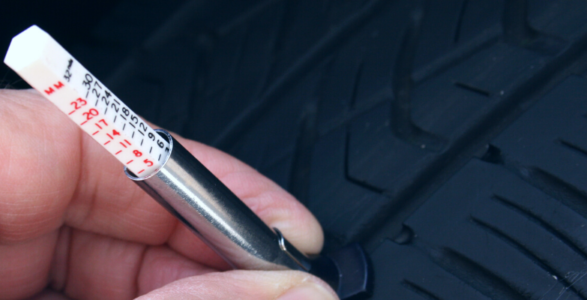A Guide to Tyre Repair Kits

Last updated 8 July 2022 | Published 14 August 2019
The majority of manufacturers are choosing to replace the spare wheel and spare tyre with tyre repair kits. Some instead like BMW have replaced the spare tyre with run flat tyres; designed to run flat long enough to get you to a garage.
Why are spare tyres disappearing?
The main three savings are:
- cost
- space
- weight.
Typically a 17” alloy wheel and tyre cost the manufacturer about £100 per car. A full size wheel weighs about 20kg and is bulky to fit in the vehicle. The cost and weight savings of a tyre repair kit are considerable compared to a spare tyre.
What is in a tyre repair kit?
The kit will usually consist of:
- A bottle of sealant (to plug the puncture)
- A compressor (to inflate the tyre)
- A speed limit sticker to remind the driver to travel at a certain speed. They usually specify speed limits of around 40-50 mph.
What to do if you get a puncture while driving?
When you detect a puncture you should drive slowly to the next available safe place to pull over. Drive for any distance and you will damage the tyre’s sidewall.
Carrying out a puncture repair on the side of a busy road, or on the motorway hard shoulder is not advised. In these instances we’d always suggest calling out one of the breakdown recovery services and let them deal with it.
Where is the tyre repair kit stored?
You will usually find the tyre repair kit under the floor of your boot or in the side panels of the car; your car’s manual will specify.
When to use a tyre repair kit?
Tyre repair kits are only meant for minor punctures such as a puncture from driving over a nail.
If you suffer a tyre blow out, have a hole larger than about 4mm or have wheel rim damage you need to stop driving the car and call out a breakdown recovery service.
How to use a tyre repair kit
Instructions may vary between models but you should find directions on the pump itself, or in the car’s manual.
To inflate your tyre:
- Remove the dust cap from your tyre.
- Attach the sealant bottle to the tyre valve.
- Attach the compressor to the sealant.
- Attach the compressor to the 12V charger (the cigarette lighter) in your car.
- Turn on your engine and wait for 10-15 minutes. At this point the tyre should be inflated.
- Disconnect the compressor and the bottle of sealant, and replace the dust cap.
Once sealed and inflated it’s important to drive the car straight away to disperse the sealant. Drive slowly (under 50mph) for a couple of miles then check the tyre again.
There should be a sticker in your puncture repair kit to attach to the steering wheel, or anywhere in the driver’s line of sight, as a reminder not to exceed the maximum speed.
If you don’t have a tyre compressor, and if possible, get to a petrol station with a tyre inflator, and add more air to the tyre.
Get your car to a garage for a permanent repair as soon as you can, and don’t forget to buy a new can of sealant to replace the old one.
Pros of tyre repair kits
- Convenience and speed of repair
- No need to remove the tyre
- More room in the boot as no spare wheel, and jack
Cons of tyre repair kits
- The kits are only suitable for minor tyre damage
- This is a temporary fix and usually limits the vehicle to about 50 miles at about 50mph
- The tyre usually cannot be permanently repaired.
Compass Vehicle Services Ltd offer: nationwide car leasing – bad credit car finance – used car deals – personal leasing – business car leasing – best car lease deals – non-status car leasing
Back to all help and advice articles





